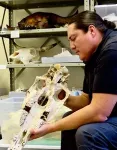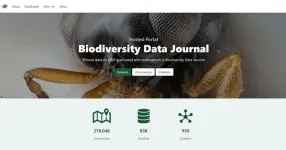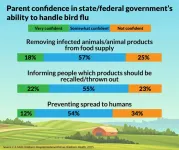EMBARGOED: FOR RELEASE 7:01 A.M. (ET), MARCH 10, 2025
Tempe, Ariz., March 10, 2025 – Life with a dog is a matter of give and take. Especially when it comes to communication. With no common human-dog language, our ability to communicate relies on understanding and reading our pet, and vice versa. That process can seem seamless. You give your dog a treat, you look into her eyes and she says “I am delighted to have that cookie.” With a slight wag of her tail, she accepts the treat and romps off to another room to enjoy it. You feel connected to your dog.
At least, that’s what you think.
New research from Arizona State University has revealed that people often do not perceive the true meaning of their pet’s emotions and can misread their dog. The reasons for this are many and include a human misunderstanding of dog expressions due to a bias towards projecting human emotions onto our pets.
In a new paper, “Barking up the wrong tree: Human perceptions of dog emotions is influenced by extraneous factors,” ASU researchers Holly Molinaro and Clive Wynne outline a pair of experiments they ran to show how humans misperceive dog emotions. Their research shows that humans typically do not have a good understanding of the emotional state of their dog because they judge the dog’s emotions according to the context of the event they witness.
“People do not look at what the dog is doing, instead they look at the situation surrounding the dog and base their emotional perception off of that,” said Molinaro, an ASU Ph.D. student in psychology and animal welfare scientist.
“Our dogs are trying to communicate with us, but we humans seem determined to look at everything except the poor pooch himself.” added Wynne, an ASU psychology professor who studies dog behavior and the human-dog bond.
Adding to the misunderstanding is a human projection of their feelings onto the dog. This “anthropomorphizing” of the interaction further clouds truly understanding what your dog’s emotional state actually may be, what she is trying to tell you.
In two experiments, Molinaro and Wynne investigated human perception of dog emotions. They video recorded a dog in what they believed were positive (happy-making) or negative (less happy) situations.
The happy situations were things like offering the leash or a treat, and the unhappy scenarios included gentle chastisement, or bringing out the dreaded vacuum cleaner. Then, in one experiment they showed ordinary members of the public these videos with and without their visual background. In the second experiment they edited the videos so the dog who had been filmed in a happy context looked like he had been recorded in an unhappy situation, and the dog who had been filmed in an unhappy situation looked like he was in a happy one. In both experiments, people rated how happy and excited they thought the dogs were. Sample size for the first experiment was 383 and for the second experiment was 485.
What the researchers found was that people’s perception of the dog’s mood was based on everything in the videos besides the dog himself.
“People do not look at what the dog is doing, instead, they look at the situation surrounding the dog and base their emotional perception on that,” Molinaro said. “You see a dog getting a treat, you assume he must be feeling good. You see a dog getting yelled at, you assume he’s feeling bad. These assumptions of how you think the dog is feeling have nothing to do with the dog’s behavior or emotional cues, which is very striking.”
“In our study, when people saw a video of a dog apparently reacting to a vacuum cleaner, everyone said the dog was feeling bad and agitated,” she continued. “But when they saw a video of the dog doing the exact same thing, but this time appearing to react to seeing his leash, everyone reported that the dog was feeling happy and calm. People were not judging a dog’s emotions based on the dog’s behavior, but on the situation the dog was in.”
Further complicating the communication process is people’s projection of their emotions onto the dog. Molinaro explained that while humans and dogs have shared a bond over the centuries, that doesn’t mean their emotional processing, or even emotional expressions, are the same.
“I have always found this idea that dogs and humans must have the same emotions to be very biased and without any real scientific proof to back it up, so I wanted to see if there are factors that might actually be affecting our perception of dog emotions,” Molinaro said. “If there were, if we as humans focused on other aspects not relating to the dog to deduce their emotional state, then as both scientists and pet owners, we really have to go back to the drawing board.”
Molinaro explained that even in studies of human perception of human emotions it is clear that there is more to reading emotion than just looking at a person’s face. Culture, mood, situational context, even a previous facial expression can influence how people perceive emotions. Yet when it comes to animal emotions, no one has yet studied if those same factors affect us in the same way.
“Our research here shows that for one of those factors, the situational context, it does.”
So how does a good dog owner cut through the biases and misreadings to understand their pets true emotional state?
“The first step is just to be aware that we are not that good at reading dogs’ emotions,” she said. “We need to be humbler in our understanding of our dogs. Once we can start from a basis of understanding our biases, we can begin to look at our pups in a new light.”
“Every dog’s personality, and thus her emotional expressions, are unique to that dog,” Molinaro explains. “Really pay attention to your own dog’s cues and behaviors.”
“When you yell at your dog for doing something bad and she makes that guilty face, is it really because she is guilty, or is it because she is scared you are going to reprimand her more? Taking an extra second or two to focus on your dog’s behaviors, knowing that you need to overcome a bias to view the situation around the dog rather than the dog himself, can go a long way in getting a true read on your own dog’s emotional state, leading to a stronger bond between the two of you.”
Molinaro and Wynne’s research is published in the journal Anthrozoos.
###
END








